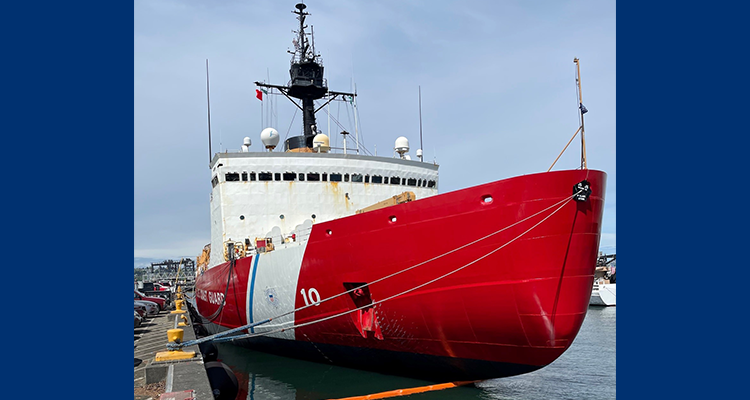May 30, 2023 —

Coast Guard Cutter Polar Star returns to homeport in Seattle on April 8, 2023, after successfully completing a 144-day Operation Deep Freeze deployment. The cutter is now in the third phase of its service life extension program. U.S. Coast Guard photo.
The Coast Guard has commenced the third of five planned phases of Coast Guard Cutter Polar Star’s service life extension program (SLEP), as part of the In-Service Vessel Sustainment Program. The contractor, Mare Island Dry Dock LLC, began work at the cutter’s homeport in Seattle on April 17, 2023, performing various initial operational tests and cable installation for the new fire detection system.
After this initial stage, SLEP work will move to Vallejo, California, with a dry-docking evolution starting in early June. Recapitalization efforts in this phase include upgrades to numerous systems including fire detection, communications and salinity cells. Completion is scheduled for early October 2023.
The 1970s control box and internal electrical controls will be replaced with a modernized system that allows operators to cycle between normal and emergency power. The 1990-era fire detection system will also be recapitalized; newer support components will increase fire and smoke detection capabilities to encompass the entire ship, replacing the legacy system that only monitored for smoke in the engine room and auxiliary compartments. The new fire detection system can interface with Coast Guard machinery controls during in-port operations, ensuring the most accurate information is available to help monitor, contain and combat onboard fires.
Further upgrades include the replacement of legacy communication systems with a 400-hertz system that requires less maintenance and will no longer require controlled parts exchanges from Polar Sea for ongoing maintenance. The 400-hertz system supports modern and legacy communication needs, radars and gyro compasses.
Finally, Polar Star will receive upgraded evaporator salinity cells, shifting the monitoring capabilities from analog to digital. The cells and system being upgraded are responsible for part of the process that allows the two onboard evaporators to supply the ship with potable water.
During Operation Deep Freeze 2023, Polar Star successfully completed the inaugural deployment of two Naval Sea Systems Command-developed control systems: the Propulsion Power Distribution System and the Coast Guard Machinery Control System.
Once phase three of the SLEP work is completed, the cutter will return to Seattle to commence preparations for the 2024 Operation Deep Freeze deployment. Phase four is scheduled to begin in April 2024 upon Polar Star’s return from Operation Deep Freeze.
The Polar Star SLEP addresses targeted systems such as propulsion, communication and machinery control systems for recapitalization. Major maintenance extends the service life of Polar Star beyond that of its original design. By replacing obsolete, unsupportable or maintenance-intensive equipment, the Coast Guard is mitigating the risk of lost operational days due to unplanned maintenance or system failures. The contracted SLEP work items and recurring maintenance is taking place within a five-year, annually phased production schedule running from 2021 through 2025. Each phase is coordinated so that operational commitments such as Operation Deep Freeze will still be met.
Polar Star is the Coast Guard’s only active heavy polar icebreaker. The Coast Guard is investing in a new fleet of polar security cutters that will sustain the service’s capabilities to meet mission needs in both the Arctic and Antarctic regions.
For more information: In-Service Vessel Sustainment Program page and Polar Security Cutter Program page.